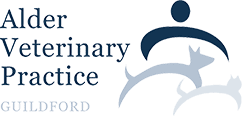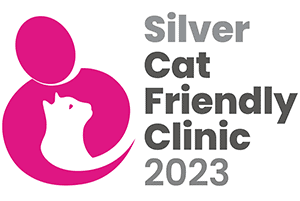RidgeStop™ Treatment for Luxating Patella
Alder Vets are pleased to offer a new technique for the treatment of Patella Luxation or “Floating Kneecap”
RidgeStop™ is a novel surgical technique for treatment of patellar luxation (floating kneecap). This is a simple, affordable alternative to sulcoplasty surgery that can be used alone, as the sole treatment for patella luxation, or as an adjunct to re-alignment operations.
Patellar Luxation or “Floating Kneecap”
Patellar luxation is one of the most common orthopedic conditions in dogs, diagnosed in 7% of puppies. The condition affects primarily small dogs, especially breeds such as Boston and Yorkshire terriers, Chihuahuas, Pomeranians, and miniature poodles. However, the incidence in large breed dogs has been on the rise over the past ten years. Patellar luxation affects both knees in 50% of all cases, potentially resulting in discomfort and loss of function. Patellar luxation can also occur following a traumatic event that disrupts the supporting structures of the stifle joint. This is seen in cats and any breed or size of dog.
What is Patellar Luxation?
The patella (kneecap) is a small bone that is positioned immediately above the tendon of insertion of the quadriceps muscle group onto the top of the tibia (shin). The patella acts as a fulcrum during normal extension of the knee joint. It glides up and down within a groove that forms the front of the knee joint. In some dogs, the patella luxates (dislocates) out of this normal groove. The consequence of this luxation is an inability to properly extend the knee joint. As well as the lameness caused by the mechanical deficiency of the affected knee, there are varying degrees of pain and osteoarthritis.
How can I tell if my pet has patellar luxation?
Patellar luxation is a common condition. The age at onset of clinical signs is variable. Most animals start to show signs as puppies or young adults, although onset of signs in mature dogs is also common. Animals with a “bow-legged” stance are more likely to be affected by patellar luxation. A characteristic “skipping” lameness is often seen, where animals will limp for a few steps and then quickly return to normal. Some animals will limp continuously and some dogs affected by patellar luxation in both knees will have a stiff, awkward gait with knees that do not extend properly.
What is the cause of patellar luxation?
The condition is primarily of genetic cause, and is the consequence of the selective breeding of dogs with a preferred (bow-legged) conformation. Animals are born with normal knees, but begin to develop abnormalities of the bones and muscles of the hind limbs early in life. The commonest direction of inappropriate movement of the patella is to the medial (inside) aspect of the knee joint. When the powerful quadriceps mechanism starts to displace in this direction, it acts as a bowstring and causes the bones of the thigh (femur) and shin (tibia) to deform into a pronounced outwards bow. The groove that normally houses the patella does not develop properly, and the limb deformities become self-perpetuating at this stage.
Patellar luxation can also occur following a traumatic event that disrupts the supporting structures of the stifle joint. This is seen in cats and any breed or size of dog.
What is happening inside an affected joint?
As the patella moves in and out of the groove, it can wear holes in the cartilage of the patella itself and in the ridge that it rides over when it luxates. This causes pain and triggers a cascade of progressive osteoarthritis. Also, the abnormal pull of the quadriceps causes internal rotation of the tibia relative to the femur that can stress other structures within the knee, including the cranial cruciate ligament (CCL). The longer the patella spends outside its normal groove, the shallower the groove becomes.
What can be done about it?
Not all animals with patellar luxation require surgery. A grading system from 1-4 exists, which determines the severity of the disease. Animals with grade 1 luxation and some with grade 2 luxation may be successfully treated conservatively (i.e without surgery). This decision will be discussed with you in detail following the clinical examination here at Alder Vets.
For those dogs that require surgery various procedures are available. But here at Alder Vets we recommend a new technique for the treatment of Patella Luxation or floating kneecap.
RidgeStop™
RidgeStop™ is a new surgical technique for treatment of patellar luxation. A simple, affordable alternative to sulcoplasty surgery that can be used alone, as the sole treatment for patella luxation, or as an adjunct to re-alignment operations.
- Minimally traumatic
- Consistent ridge height achieved
- Effective barrier enables patella tracking
- Reversible procedure
View more information about Ridgestop [PDF]








We are open 6 days a week in Guildford
Find us